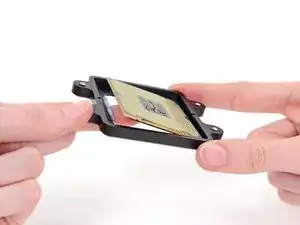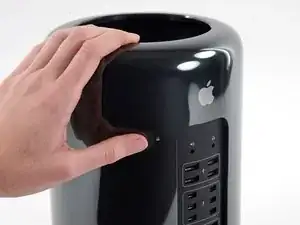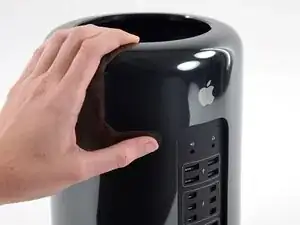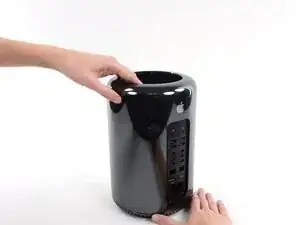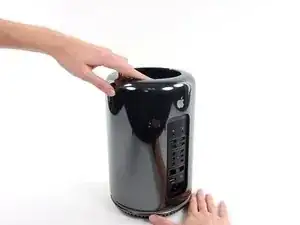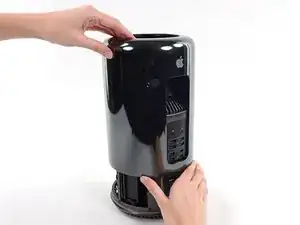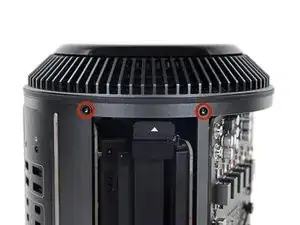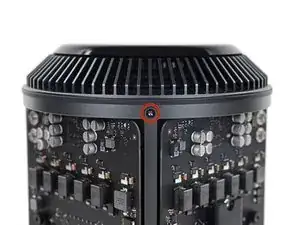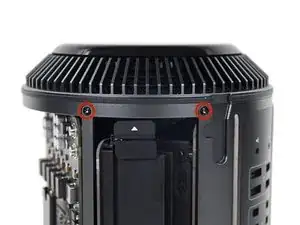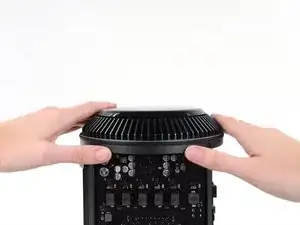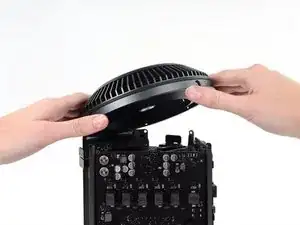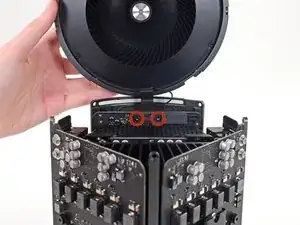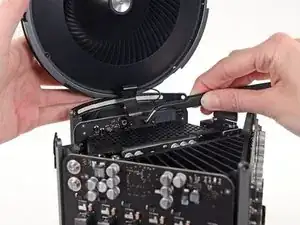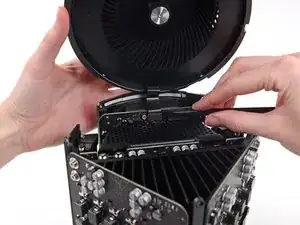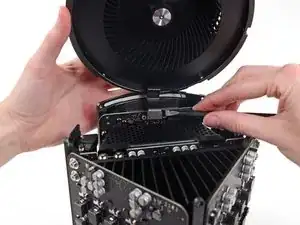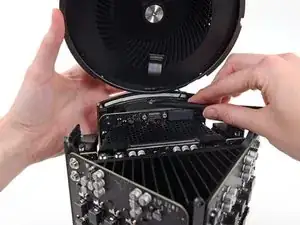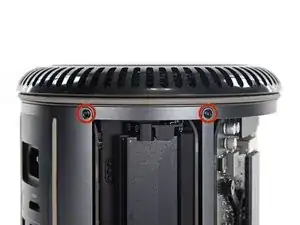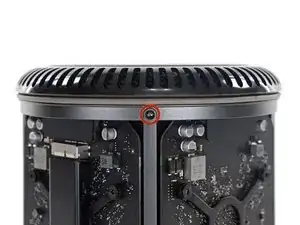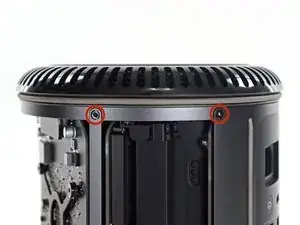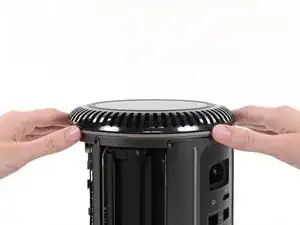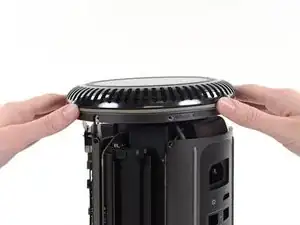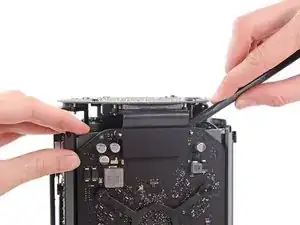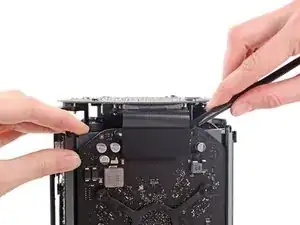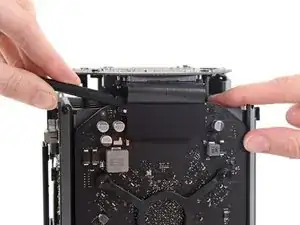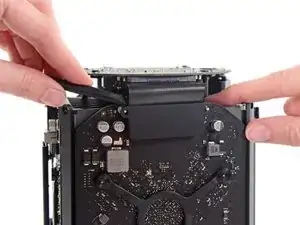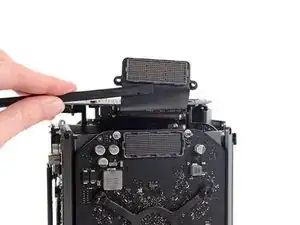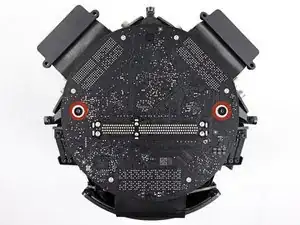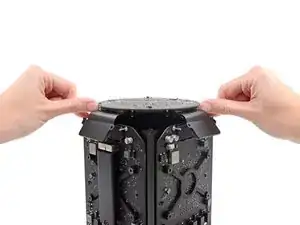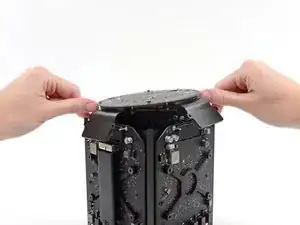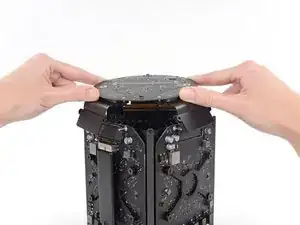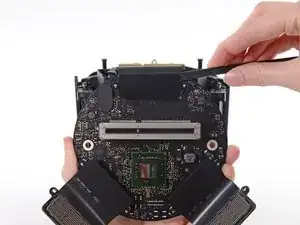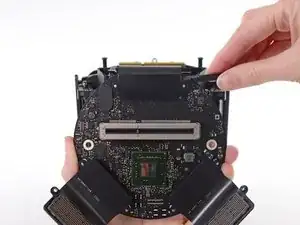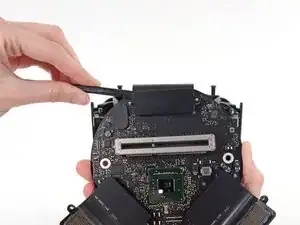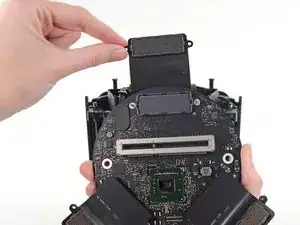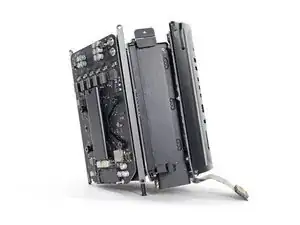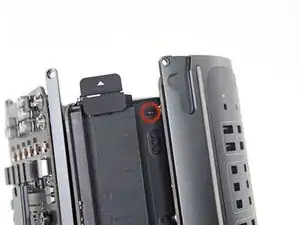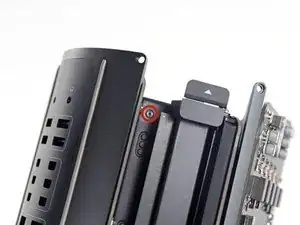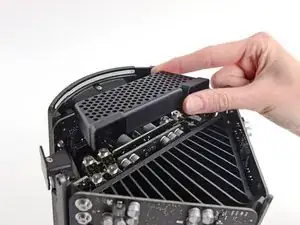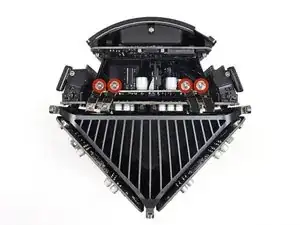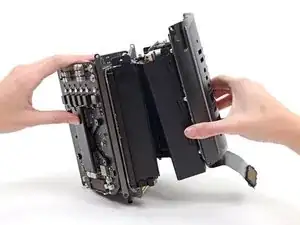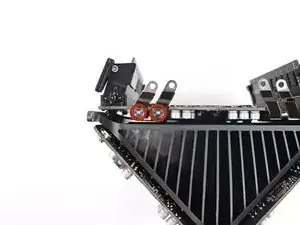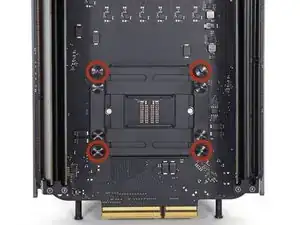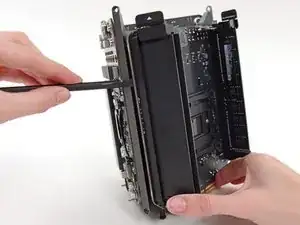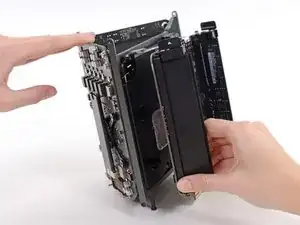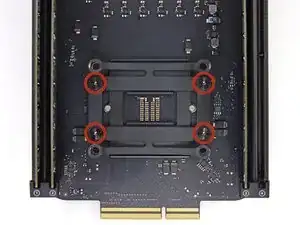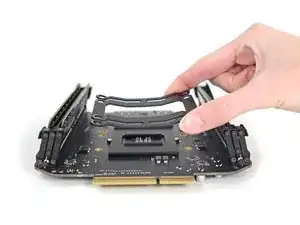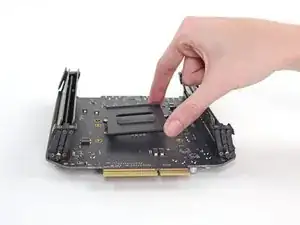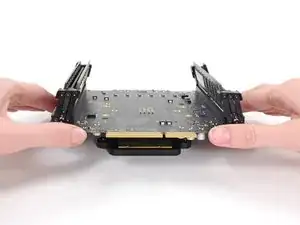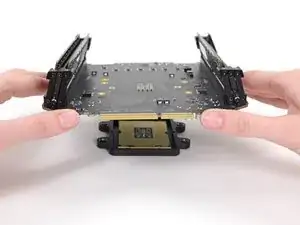Introduction
Use this guide to replace the CPU.
Removing the logic board means you'll need to reapply a layer of thermal compound.
Before beginning any work on your Mac Pro: Unplug the computer and press and hold the power button for ten seconds to discharge the power supply's capacitors.
Be very careful not to touch the capacitor leads or any exposed solder joints on the back of the power supply. Only handle the board by the edges.
Tools
-
-
While supporting the fan assembly with one hand, loosen the two T8 captive screws in the fan cable bracket.
-
-
-
Disconnect the fan assembly antenna cable from the IO board.
-
Remove the fan assembly from the Mac Pro.
-
-
-
Use the flat end of a spudger and a twisting motion to gently separate one side of the graphics card data connection.
-
-
-
Gently separate the other side as well.
-
Flip the connector up and out of the way of the graphics card.
-
-
-
Flip the interconnect board up and over, exposing the IO board data cable.
-
Use the same sort of twisting and spreading motion with the flat end of a spudger to separate one side of the IO board data cable.
-
-
-
Use the flat end of a spudger to separate the other side of the IO board data cable.
-
Bend the cable out of the way and remove the interconnect board from the Mac Pro.
-
-
-
Remove the two 3.6 mm T5 Torx screws from the sides of the power supply cage (one on each side).
-
-
-
Remove the inner four 12.8 mm T10 Torx screws from the CPU heat sink bracket.
-
Remove the CPU heat sink bracket.
-
-
-
Lift and remove the logic board from the CPU and bracket.
-
During reassembly, be sure to clean off and replace the thermal compound on the CPU.
-
We have a thermal paste guide that makes replacing the thermal compound easy.
-
To reassemble your device, follow these instructions in reverse order.
45 comments
So this means I can buy the smallest Mac Pro now and upgrade the CPU in a few years, right? I like you guys! :)
Ben -
Yes, Ben, you could. 2nd hand CpU's are available on eBay, Amazon and various companies. Review suitability of your proposed CPU that it will fit the socket FCLGA2011, and pay attention to voltage. ECC support, and TDP. Switching CPU isn't an easy task and it has risks replacing it.
aramis -
Hi Ben, I found an interesting website with more info regarding CPU upgrade:
https://blog.macsales.com/22230-owcs-mac...
from
aramis -
I just replaced the cheapest 4-core version with the 12 core 2697v2.
This saved me around $700 + i can sell the 4 core.
Can you please provide some benchmarks, i wish to do the same, but need to see if doing this myself creates any problems
How much did it cost for the new CPU? How much did you get for the old one?
Just replace it? No need to change bios?
I didn't need to change anything, no update required: booted into OS X and the CPU was detected.
aramis -
Can / Could I also use an E7?
Pete, here are a few places to look for an E7 CPU to see if it will fit/work in the Mac Pro late 2013 with the FCLGA2011 socket. Check for voltage, ECC support and TDP (base 130 watts for default CPU's) and other specs: http://www.cpu-world.com/Compare/index.h... and search for socket 2011 compatibility. Also, check http://ark.intel.com/search/advanced?s=t... , this is Intel's database for its products; it appears only the E7v2 and E7v3 may fit the board. Do your homework and find a suitable CPU. This way I found that my replacement E5-2687Wv2 would work.
aramis -
